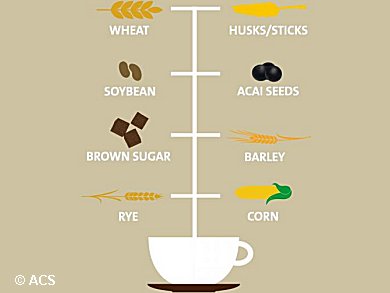Husks, sticks, corn, cocoa seeds, barley, wheat middling, chicory, soybean, triticale, brown sugar, and acai seeds or even clumps of earth can be found in coffee. Conventionally, microscopy is used to detect these, but the fillers are roasted and grinded and visually hard to identify because of the dark color and oily texture of coffee. Requiring trained and skilled analysts are needed for these semi-quantitative assays. Coffee’s high-price and growing coffee shortages may increase the chance of having these unwanted extra ingredients in it to increase profits for producers.
Suzana Lucy Nixdorf and her team, State University of Londrina, Brazil, have developed a test based on HPLC analyses associated with chemometric tools, that detects with 95 % accuracy if coffee is pure or has been tampered.
They determine total carbohydrates content profiles of pure roasted coffee beans and adulterants by using a validated high-performance anion-exchange chromatography with pulsed amperometric detection method. The influence of each matrix was evaluated using a simplex-centroid design for experiments with mixtures, relating mixing ratio with each monosaccharide by its response surfaces. All results correspond to polysaccharides from pure raw grains, confirming this approach as a feasible analytical tool.
- Presented at the 248th National Meeting & Exposition of the American Chemical Society (ACS), San Francisco, CA, USA
- All articles published from this event
- Event: 248th ACS National Meeting & Exposition


